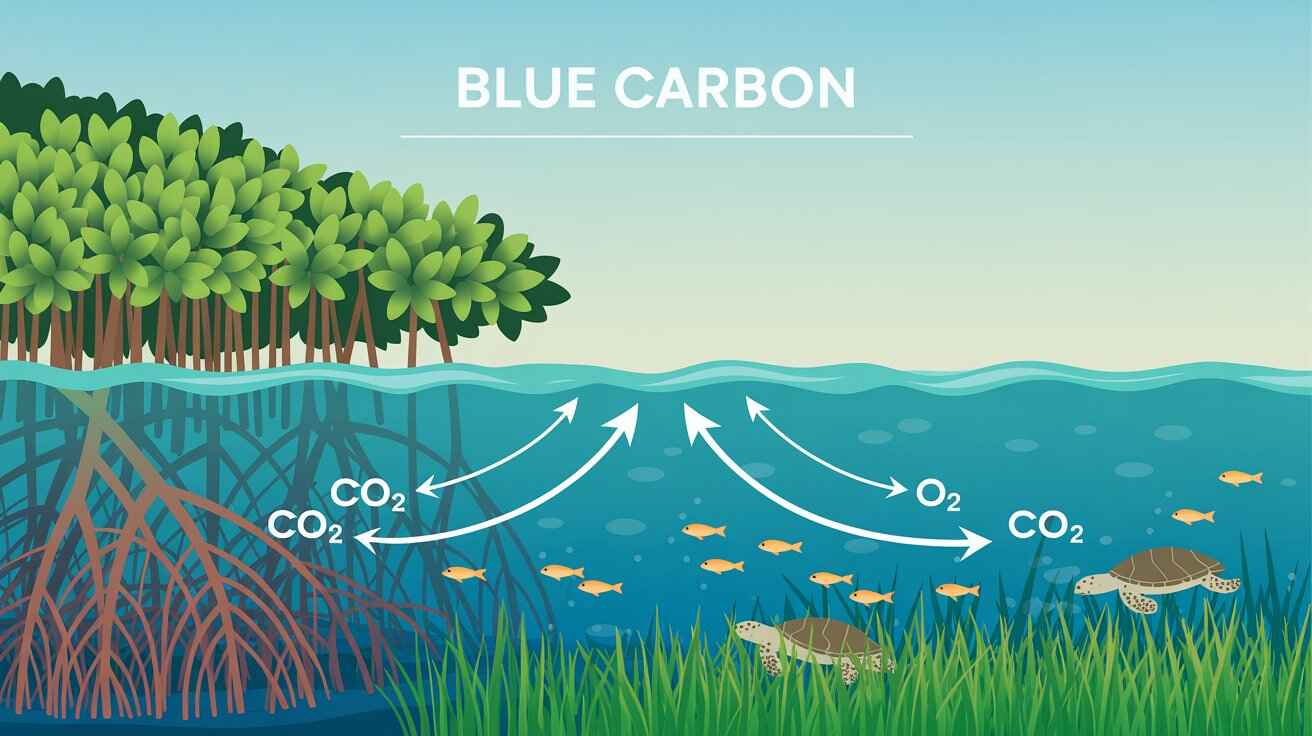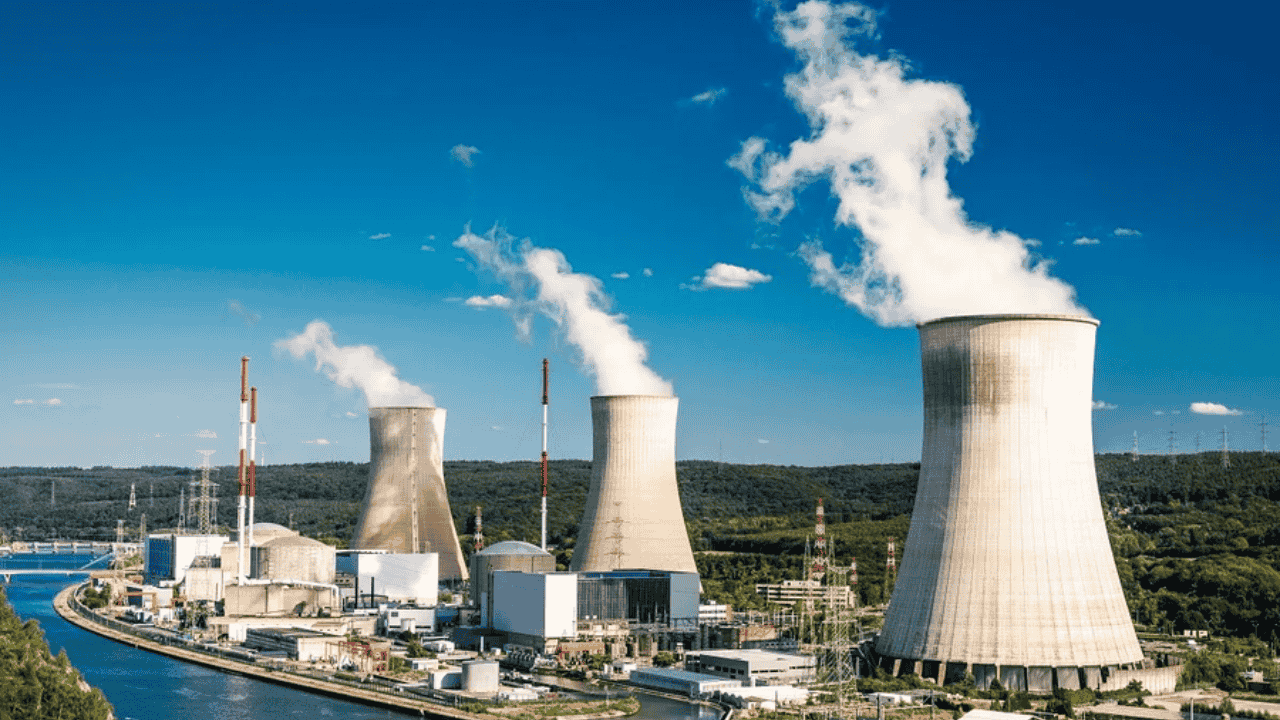India's Blue Carbon Revolution: From Coastal Guardians to Climate Champions
Blue carbon ecosystems represent one of India's most powerful yet underutilized tools in the fight against climate change. As the country grapples with ambitious net-zero targets by 2070, these coastal carbon powerhouses are emerging as critical components of India's climate strategy.
Understanding Blue Carbon: Nature's Most Efficient Carbon Vault
Blue carbon refers to organic carbon captured and stored by coastal and marine ecosystems, including mangroves, seagrass meadows, and tidal marshes. Despite covering less than 2% of the total ocean surface, these ecosystems account for nearly 50% of carbon burial in marine sediments.
The carbon sequestration capacity of blue ecosystems is remarkable:
Mangroves can store up to four times more carbon per unit area than terrestrial forests
Seagrass meadows remove about 0.5 pounds of carbon per square meter annually - more than triple the rate of tropical rainforests
Salt marshes provide additional carbon storage while protecting coastlines from erosion
Currently, 33 billion metric tons of carbon is stored in blue carbon ecosystems globally, equivalent to 81% of the emissions produced worldwide in 2023.
India's Blue Carbon Potential: A Coastal Powerhouse
India, with its vast coastline spanning over 7,500 kilometers, possesses significant blue carbon resources. The country's mangrove ecosystem covers 4,992 square kilometers, with major carbon sinks located in:
The Sundarbans in West Bengal - holding 41.5 million tonnes of CO₂ equivalent
Godavari mangroves in Andhra Pradesh
Pichavaram mangroves in Tamil Nadu
Seagrass ecosystems in Tamil Nadu, Lakshadweep, and the Andaman and Nicobar Islands
The Forest Survey of India estimates India's mangrove carbon sequestration potential at 702.42 million tonnes of CO2e, projected to increase to 748.17 million tonnes by 2030.
Government Initiatives: MISHTI Leading the Charge
The Indian government has launched the Mangrove Initiative for Shoreline Habitats & Tangible Incomes (MISHTI) scheme, announced in Union Budget 2023-24. Key features include:
Coverage: 540 square kilometers across 9 coastal states and 4 Union Territories over five years (2023-2028)
Employment Generation: Creating 22.8 million man-days
Carbon Sequestration Target: 4.5 million tons of carbon
Funding: Convergence through CAMPA (70%), MGNREGS and other schemes (30%)
Tamil Nadu has received ₹220.43 lakhs for mangrove restoration activities, including those at Pichavaram, under the National Coastal Mission.
Blue Carbon Credits: The Economic Opportunity
The voluntary carbon market presents significant opportunities for blue carbon projects. Key market dynamics include:
Premium Pricing: Blue carbon credits command premium prices of $13-35 per metric ton, compared to standard carbon credits averaging $7.53 per ton. Some high-quality blue carbon credits have reached $40 per tonne.
Market Growth: India's carbon credit market could grow to ₹4.1 lakh crore (~$49.4 billion) by 2030, with a CAGR of 43%. More than 250 million carbon credits are expected to be traded domestically in 2025 alone.
International Models: The Seychelles Blue Bond, which raised $15 million in 2018 for marine conservation, provides a successful financing model that India could replicate.
Gujarat's Pioneering Carbon Credit Initiative
Gujarat has emerged as a frontrunner in blue carbon projects, signing three MoUs worth ₹2,217 crore (over $266 million) for carbon credits through mangrove plantation. This groundbreaking initiative:
Represents the first-of-its-kind mangrove-based carbon credit project in India
Involves active community participation
Includes additional agreements in agroforestry
Explores carbon sequestration potential in four Ramsar sites: Nal Sarovar, Thol, Khijdia, and Vadwana
Challenges Hindering Blue Carbon Development
Despite the immense potential, several barriers limit blue carbon project adoption in India:
Institutional Fragmentation: Unlike land-based projects, blue carbon initiatives fall under multiple authorities - Ministry of Environment, Forest and Climate Change, State Coastal Zone Management Authorities, forest departments, and fisheries departments.
MRV Gaps: Measurement, Reporting, and Verification processes for blue carbon remain underdeveloped compared to terrestrial projects, making accurate valuation challenging.
Environmental Risks: Blue carbon ecosystems face threats from sea level rise, coastal erosion, and climate change. In the Sundarbans Delta, soil erosion has resulted in 24.55% mangrove loss over three decades.
High Implementation Costs: Blue carbon projects require significant startup capital and specialized expertise, making them more expensive than terrestrial alternatives.
Recent Restoration Efforts Gaining Momentum
India has launched major mangrove restoration drives across multiple states:
Tamil Nadu - Green Tamil Nadu Mission: Mangrove cover doubled from 4,500 to 9,000 hectares (2021-24) through canal reworking and native seed planting.
Mumbai - Thane Creek Project: ₹10.3 crore project to plant 3.75 lakh mangrove saplings.
National Coverage: UNESCO and IUCN data reveals that global mangrove cover has halved since 1985, making restoration efforts critically urgent.
International Context and Learning Opportunities
Successful international models provide valuable lessons for India:
Australia's Blue Carbon Accelerator Fund: Provides upfront capital for coastal restoration projects, later recouped through carbon credit sales.
Indonesia's Peat and Mangrove Restoration Agency: Partners with academic institutions to refine sequestration baselines and standardize methodologies.
Seychelles Success Story: The world's first sovereign blue bond has inspired similar initiatives globally, with the blue bond market growing to $15.25 billion by 2025.
Future Outlook: Scaling Blue Carbon in India
The global voluntary carbon market, valued at $669.37 billion in 2024, is projected to reach $16,379.53 billion by 2034 with a CAGR of 37.68%. For India to capitalize on this opportunity, strategic interventions are needed:
Establishing a centralized blue carbon authority
Developing standardized MRV protocols
Creating blended finance mechanisms
Implementing climate-resilient frameworks
Strengthening community participation models
Corporate commitments are also driving demand. Companies like Salesforce have pledged to purchase one million tons of blue carbon credits worth over $10 million. The Symbiosis Coalition, including Google, Meta, Microsoft, and Salesforce, has committed to 20 million tons of nature-based carbon removals.
Why This Matters for Your Exam Preparation
For UPSC Civil Services: Blue carbon ecosystems are increasingly relevant for:
Environment and Ecology (GS Paper III): Understanding carbon sequestration mechanisms, climate change mitigation strategies
Geography (GS Paper I): Coastal ecosystems, mangrove distribution, climate-environment interaction
Current Affairs: MISHTI scheme, carbon credit trading, international cooperation on climate change
For State PSC Exams: Particularly relevant for coastal states like:
West Bengal, Tamil Nadu, Gujarat, Maharashtra (mangrove conservation initiatives)
Odisha, Andhra Pradesh, Kerala (coastal management policies)
For Other Competitive Exams: Essential for:
Banking exams: Green finance, carbon credit markets, sustainable development financing
SSC/Railway exams: Environmental awareness, government schemes, climate change initiatives
Defence exams: Coastal security, environmental challenges, strategic resource management
Key Topics to Focus On:
MISHTI scheme implementation and targets
Carbon credit market mechanisms and pricing
International cooperation models (Paris Agreement Article 6)
Mangrove distribution in India and conservation challenges
Blue economy initiatives and coastal zone management
MRV protocols and certification processes
Blue carbon ecosystems represent a convergence of environmental conservation, economic opportunity, and climate action - making them a critical topic for comprehensive exam preparation across multiple subjects and current affairs segments.







